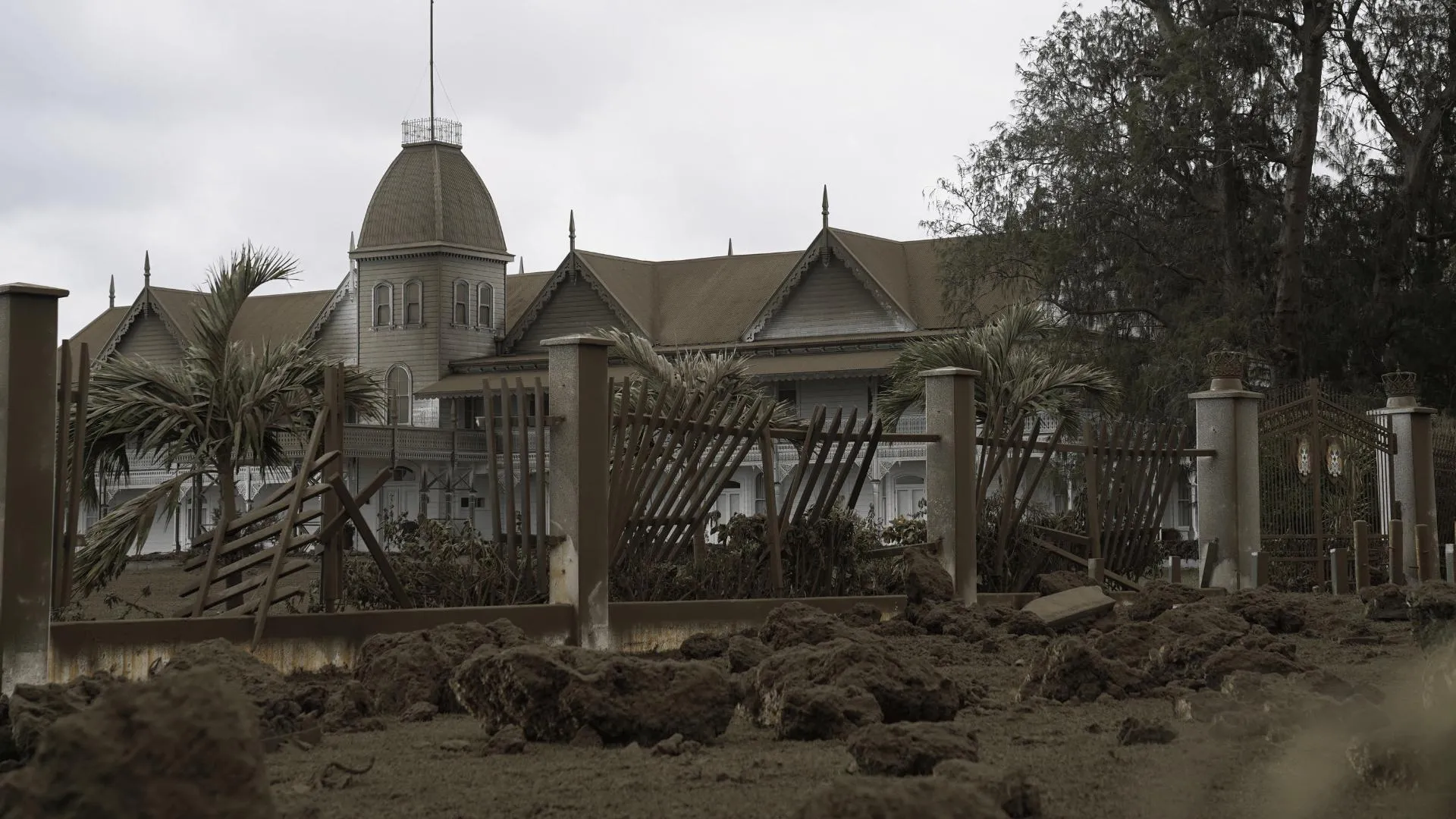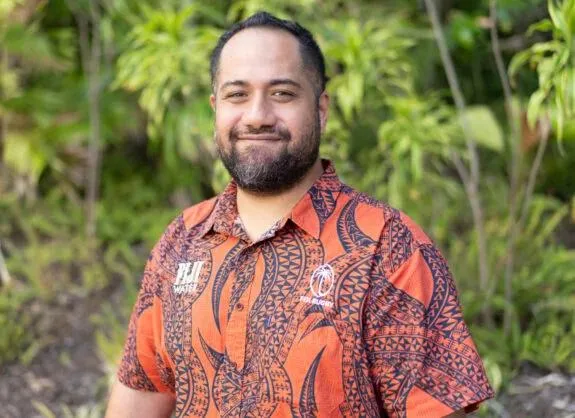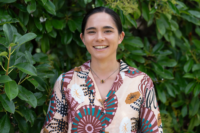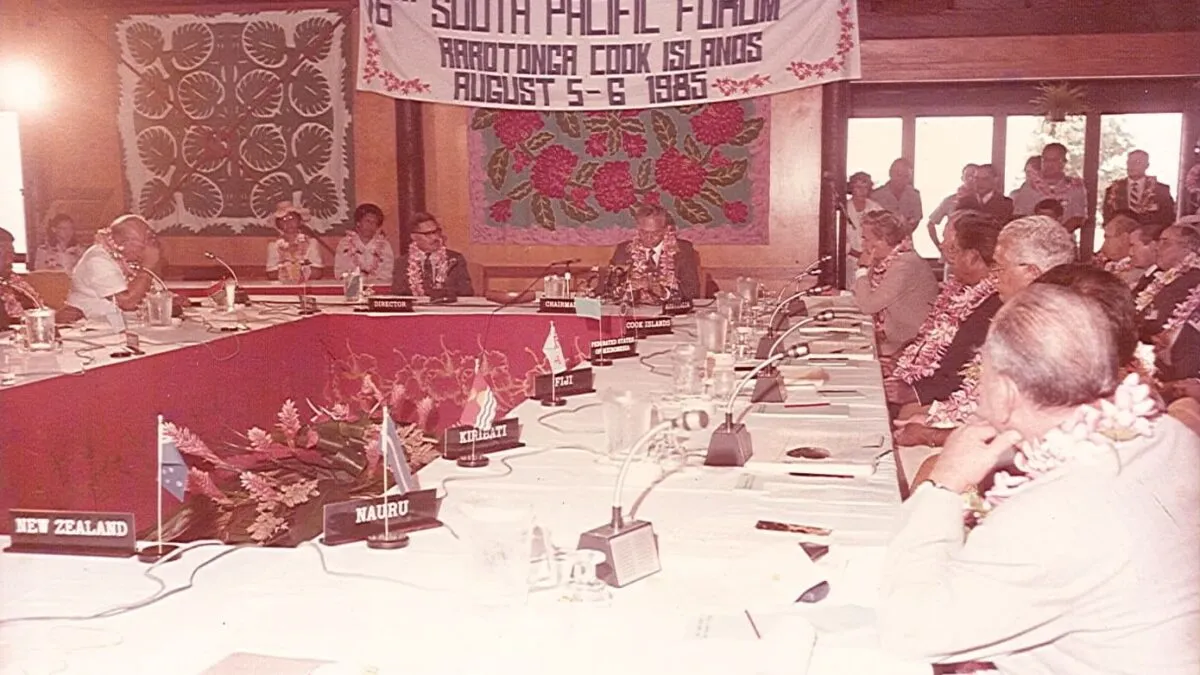Expecting the unexpected: embedding foresight in Pacific processes

Tonga’s Royal Palace covered in volcanic ash following the eruption of the Hunga Tonga-Hunga Ha’apai underwater volcano in 2022. Photo: Mary Lyn Fonua/Matangi Tonga/AFP
Pacific Island Forum Leaders operate in a highly uncertain environment – dealing with everything from natural disasters, and parliamentary instability to tariff announcements.
The practice of ‘foresight’ can help leaders anticipate possible future trends and events and evaluate the best option to take. Foresight equips leaders to act at the right moment, not by predicting the future, but by preparing for possible future events and identifying the most beneficial course of action.
Some Forum Member countries are already using strategic foresight.
Fiji has embedded long-range thinking into law, through its Climate Change Act 2021, creating a legal basis for carbon budgets, data systems, and long-term targets, and giving ministries institutional authority for future-oriented policy.
The Cook Islands uses a multi-time scale design in its Te Ara Akapapa’anga Nui – National Sustainable Development Agenda (NSDA) 2020+. The agenda consists of a 100-year vision; with annual indicator reports, five-year strategies and a 25-year framework, connecting daily ministerial decisions to multi-generational direction.
Through the Tile Til Eo 2050 climate strategy, the Republic of Marshall Islands has anchored its long-term approach to climate change to cultural and traditional concepts to guide climate resilience approaches that span political cycles.
There is enormous value in governments embedding foresight into existing government rhythms rather than creating parallel systems that compete for attention and resources.
So, how can governments do this in a way that respects culture, and works within the limited financial and human resources that many Pacific governments face?
A tailored approach
Senior government officials have limited financial and human resources but oversee extensive portfolios and face significant donor reporting requirements. Their cabinet reporting and briefing obligations also cover a wide array of issues. In this context, the use of foresight can be beneficial, but it must be tailored to suit resourcing and the nation’s needs.
When deadlines are short and human resources stretched, a brief foresight exercise can be highly beneficial. A rapid scan to identify just 10-20 key signals can be condensed into a short cabinet paper that highlights key risks, opportunities, and ‘no-regrets’ actions that make sense no matter what the future holds. In situations of poor internet connectivity, inputs for a scan can be gathered through WhatsApp or similar applications or even transcribed voice notes.
Where decisions require more robust analysis, a 90-minute scenario stress test can offer deeper insight. This involves checking a preferred option against up to four different possible future scenarios and identifying any necessary adaptive approaches.
There are a number of sustainable ways to embed foresight into ongoing operations. Aligning quarterly foresight scans with budget preparation cycles would enable foresight to feed directly into resource allocation considerations and decisions. Developing templates and processes to bring foresight approaches into the ordinary policymaking processes of government and day-to-day planning and reporting is another way forward. Employing a foresight manager and analyst in the Prime Minister’s office or in the Planning Ministry could also establish continuity.
Tools of the trade
Small ministries need not reinvent the wheel when it comes to global trends analysis. Strategic adaptation of existing global scans, combined with Pacific or national level overlays can create relatively sophisticated outputs at manageable cost. A global tourism scenario, for example, might be adapted by layering Pacific-relevant analysis, context, and local emerging issues, to develop a customised five-year plan.
Existing toolkits and resources, such as Pacific Community’s Pacific Pathfinder, can be applied to a national context. The Pacific Pathfinder offers tested tools that have been developed for regional use, and countries should adopt and adapt these to match their capacity. Horizon scanning, scenario development and the use of the futures triangle framework should be considered part of a menu of options, rather than a system to be used in full. Similarly, the Digital Earth Pacific programme offers regional and national climate change observations from which national analysis can be developed.
It is also possible to share analytical costs through regional and South-South cooperation. When one Forum Island country develops climate scenarios, it may be possible for neighbouring countries to also use and adapt them. Template sharing and joint analysis can reduce individual country costs while improving quality through peer validation and cross-country learning.
Consultation and consistency
Embedding the use of foresight at national level may require engagement that goes beyond government consultation.
This may require conducting consultation in the community, conducting consultations and closing the ‘feedback loop’ by providing a timely plain-language report to participants.
An effective signals scan or outlook report should be built on a wide array of stakeholder views. Engaging a variety of stakeholders while preparing a forward-looking project or plan can build community legitimacy and ownership.
By embedding foresight into everyday decision-making, Pacific governments can move from reacting to crises toward shaping resilient futures. The approaches don’t need to be complex or resource-heavy – what matters is consistency, contextual grounding and alignment with existing processes.
In an age of uncertainty, foresight is not a luxury; it is a practical tool for leaders to navigate risks, seize opportunities, and chart a course that safeguards the wellbeing of generations to come.
Gareth Priday is a foresight practitioner with Action Foresight and a director of the Australian Living Labs innovation network. He supported the foresight process for the 2050 Strategy for the Blue Pacific Continent.
Joel Nilon is Senior Pacific Fellow at the Pacific Security College at the Australian National University. He previously served at the Pacific Islands Forum Secretariat for nine years as a Policy Adviser and led the development of the 2050 Strategy for the Blue Pacific Continent.
Views expressed via the Pacific Wayfinder blog are not necessarily those of the Pacific Security College.
This article is licensed under a Creative Commons Attribution-NonCommercial-NoDerivatives 4.0 International License (CC BY-NC-ND 4.0). Read our publishing policy.
- Themes:
- Strategic foresight







